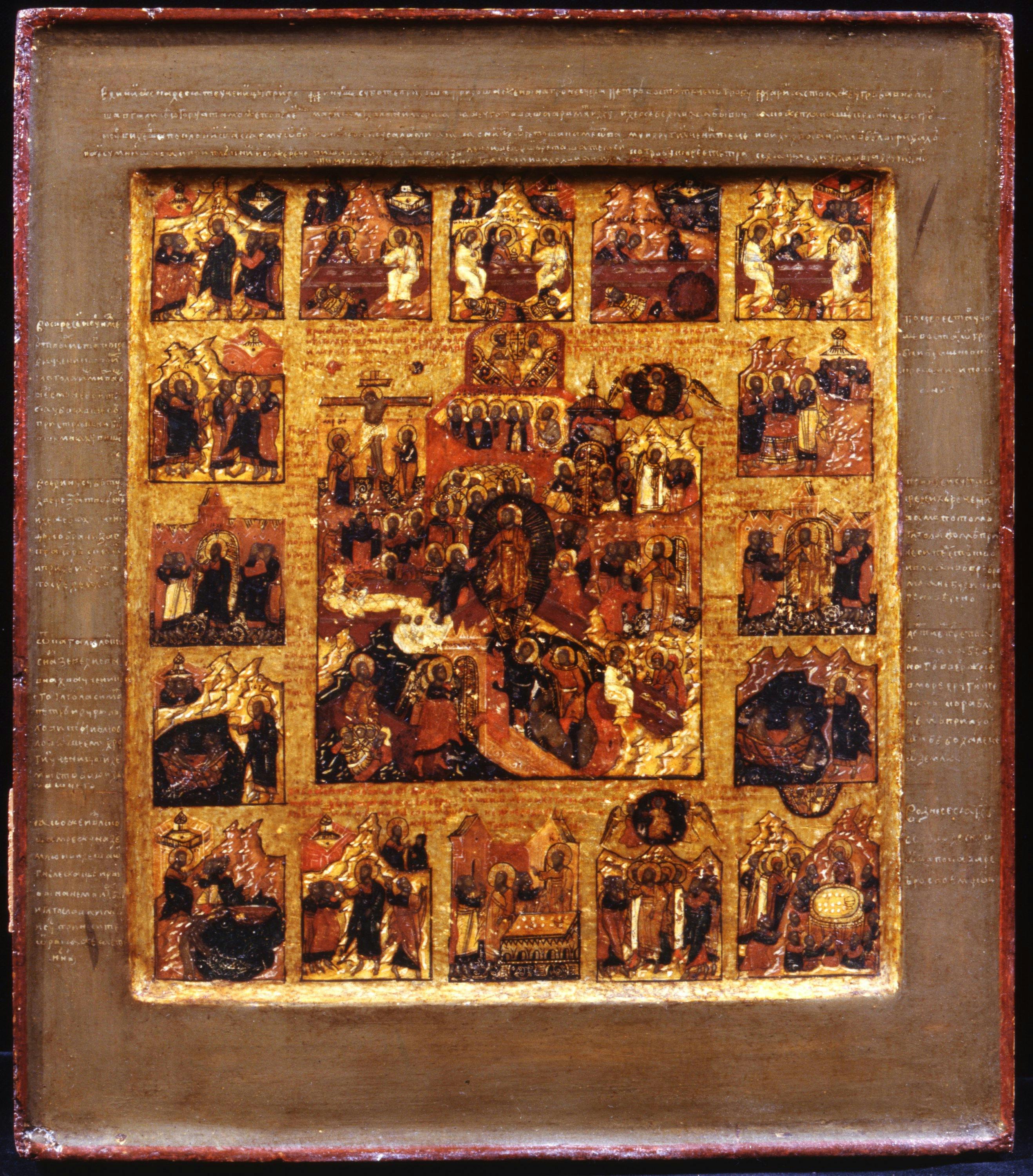Resurrection of Christ and Descent into Hell, with sixteen scenes of Christ's post-mortem stories
Central Russia
The fulcrum of the icon is the image, in the middle of the central panel, of the risen Christ descending to the underworld to free Adam, Eve and the Righteous, according to the narration of an apocryphal text, the Gospel of Nicodemus. The scene includes numerous other episodes illustrating the story of Christ, from the Crucifixion to the representation of the Redeemer enthroned with God the Father and the Holy Spirit. In the sixteen panels arranged around the perimeter of the icon, sixteen post-mortem stories of Christ are illustrated. They are depicted, in horizontal registers from left to right, starting at the top: Appearance of Christ to the disciples in Galilee; Appearance of angels to the pious women (subject repeated twice); Peter, John and Mary Magdalene at the Lord's tomb; Appearance of two angels to Mary Magdalene; Appearance of Christ to the apostles; Sharing of bread with the disciples; Appearance of Christ to the apostles; Thomas’ Disbelief; Appearance of Christ to the apostles at the Sea of Galilee (subject repeated three times); Proclamation of St. Peter's mission (subject repeated twice); Ascension of the Lord; Return of the Mother of God and the apostles from the Mount of Olives. For these scenes the sources of inspiration are the canonical Gospels and the Acts of the Apostles, although the selection and sequence depends on the interpretation offered by various liturgical texts. When the same episode is narrated by several evangelists, the subject is repeated in the icon.
The icon is painted with extensive use of chrysography, the application of gold leaf on which semi-transparent glazes or opaque colours were applied and then engraved. Faint highlights illuminated the olive complexions of the figures. Such characteristics were common in the production of the workshops of central Russia in the 17th century, the period to which the execution of this work can also be referred.
On the back, an inscription recalls the transfer of the icon from the Secret Archive of Pitti Palace on 8 July 1773.
